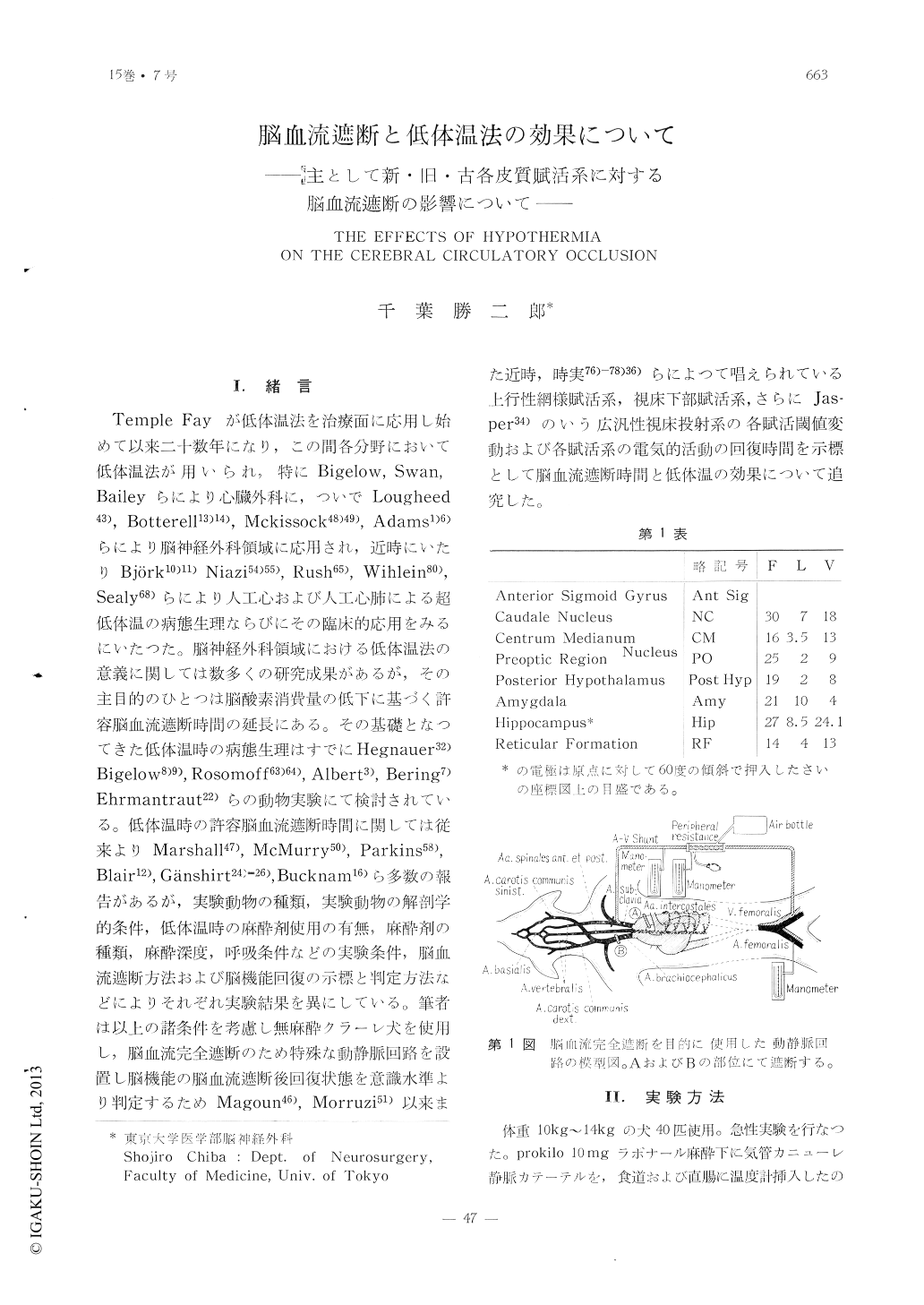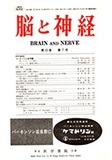Japanese
English
- 有料閲覧
- Abstract 文献概要
- 1ページ目 Look Inside
I.緒言
Temple Fayが低体温法を治療面に応用し始めて以来二十数年になり,この間各分野において低体温法が用いられ,特にBigelow, Swan, Baileyらにより心臓外科に,ついでLougheed43), Botterell13)14), Mckissock48)49), Adams1)6)らにより脳神経外科領域に応用され,近時にいたりBjörk10)11)Niazi54)55), Rush65), Wihlein80), Sealy68)らにより人工心および人工心肺による超低体温の病態生理ならびにその臨床的応用をみるにいたつた。脳神経外科領域における低体温法の意義に関しては数多くの研究成果があるが,その主目的のひとつは脳酸素消費量の低下に基づく許容脳血流遮断時間の延長にある。その基礎となつてきた低体温時の病態生理はすでにHegnauer32) Bigelow8)9), Rosomoff63)64), Albert3), Bering7)Ehrmantraut22)らの動物実験にて検討されている。低体温時の許容脳血流遮断時間に関しては従来よりMarshall47), McMurry50), Parkins58), Blair12), Gänshirt24)−26), Bucknam16)ら多数の報告があるが,実験動物の種類,実験動物の解剖学的条件,低体温時の麻酔剤使用の有無,麻酔剤の種類,麻酔深度,呼吸条件などの実験条件,脳血流遮断方法および脳機能回復の示標と判定方法などによりそれぞれ実験結果を異にしている。筆者は以上の諸条件を考慮し無麻酔クラーレ犬を使用し,脳血流完全遮断のため特殊な動静脈回路を設置し脳機能の脳血流遮断後回復状態を意識水準より判定するためMagoun46), Morruzi51)以来また近時,時実76)−78)36)らによつて唱えられている上行性網様賦活系,視床下部賦活系,さらにJas—per34)のいう広汎性視床投射系の各賦活閾値変動および各賦活系の電気的活動の回復時間を示標として脳血流遮断時間と低体温の効果について追究した。
For researching the effect of hypothermia on the cerebral circulatory occlusion, the specific arterio-venous shunt was made, which was prepared between left subclavian artery and left femoral vein of dog. By making this preparation, complete occlusion was obtained. Under craniotomy in the curarized dogs, the electrodes were inserted to the amygdala (pareocortex), hippocampus (archicortex), neo-cortex, anterior hypothalamus and brain stem reticluar formation. Under the various periods of cerebral circulatory occlusion in the hypo-thermic state (30℃, 25℃), the recovery time of electroencephalographic patterns in the descrived regions and the threshold change of electrographic activation in the hypothalamic (anterior, posterior) activating system, which was descrived by Tokizane, and reticular activating system were studied. The results were as follows:
After the release of cerebral circulatory occlusion, the recovery time of electroence-phalographic patterns in the amygdala and anterior hypothalamus were shorter than the others. Threshold of electrographic activa-tion in the hypothalamic activating and reticu-lar activating system were elevated after the cerebral circulatory occlusion, especially in the later system. The threshold change of anterior hypothalamic activating system was not so prominent and this system shows considerable resistance to the anoxia induced by the cerebral circulatory occlusion. After the release of cerebral circulatory occlusion in the various temperatures, the reappearance of the hippocampal arousal pattern varies within certain range in regard to the time of cerebral circulatory occlusion. From the above findings, especially the threshold change of the various kinds of activating system and the reappearance of hippocampal arousal pattern, the safe permissible time of cerebral circulatory occlusion could be assumed as 3 minutes, 8 minutes, 15 minutes, at 38℃, 30℃, 25℃ respectively.

Copyright © 1963, Igaku-Shoin Ltd. All rights reserved.


